NJtsr95
Seedling
A little background to this experiment. I’m not new to houseplants/ growing difficult species indoors with mixed success in past, however I’ve decided to really try to put in some effort and really try to build a relatively low cost, yet effective system to grow trees indoors for those of us stuck renting without usable yard space. Note: the size of your living space/grow room will affect feasibility, since ive only got about 600sq ft and only about half of that is the living room “or plant/tree room”, making it relatively easy to manipulate humidity and temperature conditions in a semi contained area. I also have no forced air heat to contend with (is a humidity problem in winter).
All the trees seen here (with the example of the red maple forest in bonsai pot, collected about a month ago) were purchased in late May and arrived 1st week of June so between 60-80 days. All indoors the entire time, with some species like the large Pitch Pine especially, and also Bald Cypress and the Maples, if the light was insufficient I would think they would have shown signs of stress or lack of vigor by now, yet all have exceeded my expectations in growth rate and appearance. The Holly is another exception which was rescued from near the dumpster from landscapers who yanked it out, it seemed pretty green at first but may have had too much root damage to save. Ive just plopped it in sphagnum moss hoping peter chan’s energy can revive it. Possible lost cause there.
I have been running a series of full spectrum LEDs and also “pink light” which seemed to make one of my tridents quite happy so ive added it to the entire rack. Importantly, I’ve got a series of 400nm LED UV and 365nm Fluorescent UV bulbs broadly covering the rack which are connected to a smart plug to come on exactly at sunrise and off at exactly sunset. With the intention to supply a bit of supplemental longwave UV-A (beneficial for growth in tandem with full spectrum and when NOT excessively powerful).
Source:
All of these lights (besides fluoro UV) are LED, combined, they draw a couple hundred watts while running (but keep in mind thats total with about the same amount of lights in other room with my tropicals and the “Bootleg Propagator-nator V1.2”.
I also keep airflow over my plants and trees constantly, via recirc blower from the wall unit. Further running an oscillating fan on high to give the trees a bit of simulated wind (the bend in branches is considerable, not a weak fan several feet away) and to keep air flowing to soil regularly. I have a humidifier that was about $30 that does a great job of keeping this wall of trees and plants locally more humid than the rest of the apt.
Everyone says trees NEED to grow outside, and its excessively hard indoors, I mostly agree. But all plants are supposed to grow outside and also not being confined to a tiny pot and having roots cut back and 90% of foliage removed too… I am not convinced that my Indoor Pitch pine allowed more room to grow in a bigger pot is less healthy than one with about 12 needles left on the tree in total jammed into a 4” pot and twisted drastically in all kinds of shapes, but grown outside.
While I understand these trees arent “bonsai” yet, the material was purchased from nurserys as “pre bonsai stock” or tubelings (j virginiana and c thyoides were tubelings) or in a few cases, collected. With the intention however to shape them into bonsai come dormancy period for the deciduous trees. But in all likelihood i may let them grow another year unrestricted to develop thicker trunk and robust roots first.
How do I plan to fool them into dormancy? Well the two large windows right in front of the rack will be opened, (i keep windows open all year except in the peak of summer, to promote fresh airflow and I exhaust it out of the other room causing a sort of draft effect) allowing cooler air to pool around the windows and tree rack. While the nearly ceiling mounted powerful full spectrum grow lights promote airflow over the rack as the air directly near the ceiling is heated. With the way the rack was built I can also throw some kind of tarp or plastic wrapping along the side of rack facing interior of room to sort of create a “cold greenhouse” effect with the windows open.
If this fails and I am unable to achieve dormancy and end up with a bunch of ailing trees come winter, all y’all in the local area that told me so are welcome to take them, as im not trying to be a tree-mengele and my goal is to have at least most stems (in multiple stem groups) to survive and even thrive. if any of these are interesting you for your collection or if you would want to use them as landscaping pieces in the yard im willing to part ways to give them a more spacious home if I start killing them.
Anybody else in a situation where they are or previously attempted to grow and overwinter indoors and have experience to share, or tips on what works and doesn’t work would be appreciated. I made the mistake of not measuring the heights and crown spread of the trees when i received them, but starting this week i plan to measure weekly, as im genuinely curious what the growth rates are, the red maples and pine and metasequoia/ bald cypress have suprised me so far with their vigorousness thus far given the notoriously high light reqs. Esp for pitch pine. I want to take the data so if this is successful it may be of some scientific use?
I always choose sparse or perhaps not the highest quality data and analysis over “conventional wisdom” anyday, obviously GOOD and highly accurate data is most valuable but something’s better than nothing. Conventional wisdom told me that attempting to root a 40” tall and 40-50ish” crown spread full stalk of a corn plant D. Fragrans with the entire crown of leaves left on the stalk (except lower foot or so of stalk for clearance from container) is a really stupid idea and will dry out and die. Or will take a year to root. Well this accidentially became an experiment when the other cutting i took same day which was from my compacta dracaena (small var corn plant, much smaller, dark green lanceolate leaves) where I only took about 4” of the growing shoot and left on about 5 leaves and had both in separate rooms at the time. I was shocked that when I noticed buds breaking from the parent big corn plant, i checked the small one in other rooms and the buds were pushing out at the exact same time. More strangely though, at the same time i noticed the buds (about 2 weeks ago now, about 6weeks from cuttings date) I noticed new growth on the small growth shoot from the smaller plant, and sure enough its at least partially or mostly rooted. Went to check on the giant crown of giant leaves, ridiculous “cutting” i attempted to root. And I gave it a light tug and immediately noticed it wasnt spinning around like a hotdog on the counter of the 7/11 anymore when i touched it. No way, sure enough, it rooted. Its not pushing new growth yet, but its at least mostly rooted with new root buds (or sprouts) breaking from the soil line.
Conventional wisdom said leaving full leaves, let alone the entire crown of very large leaves on a plant with gigantic leaves, is a hopeless endeavor or it’ll take a year of misting to root vs trying a much smaller piece or cutting leaves in halves or more to limit transpiration. It shouldnt have worked, and it shouldnt have rooted in the same time as a much smaller growth shoot. But it did. I have photographic proof of this if interested but thats another story.
All advice or critique on the setup or approach, or experiences with your own attempts, no matter how successful or not are appreciated! But please.. yes, I know “trees belong outside” but again I’d say “well so do all plants, really”. Thanks and I appreciate input! May go back and revise later typing in haste on mobile right now, apologies if formatting is a mess.
All the trees seen here (with the example of the red maple forest in bonsai pot, collected about a month ago) were purchased in late May and arrived 1st week of June so between 60-80 days. All indoors the entire time, with some species like the large Pitch Pine especially, and also Bald Cypress and the Maples, if the light was insufficient I would think they would have shown signs of stress or lack of vigor by now, yet all have exceeded my expectations in growth rate and appearance. The Holly is another exception which was rescued from near the dumpster from landscapers who yanked it out, it seemed pretty green at first but may have had too much root damage to save. Ive just plopped it in sphagnum moss hoping peter chan’s energy can revive it. Possible lost cause there.
I have been running a series of full spectrum LEDs and also “pink light” which seemed to make one of my tridents quite happy so ive added it to the entire rack. Importantly, I’ve got a series of 400nm LED UV and 365nm Fluorescent UV bulbs broadly covering the rack which are connected to a smart plug to come on exactly at sunrise and off at exactly sunset. With the intention to supply a bit of supplemental longwave UV-A (beneficial for growth in tandem with full spectrum and when NOT excessively powerful).
Source:
All of these lights (besides fluoro UV) are LED, combined, they draw a couple hundred watts while running (but keep in mind thats total with about the same amount of lights in other room with my tropicals and the “Bootleg Propagator-nator V1.2”.
I also keep airflow over my plants and trees constantly, via recirc blower from the wall unit. Further running an oscillating fan on high to give the trees a bit of simulated wind (the bend in branches is considerable, not a weak fan several feet away) and to keep air flowing to soil regularly. I have a humidifier that was about $30 that does a great job of keeping this wall of trees and plants locally more humid than the rest of the apt.
Everyone says trees NEED to grow outside, and its excessively hard indoors, I mostly agree. But all plants are supposed to grow outside and also not being confined to a tiny pot and having roots cut back and 90% of foliage removed too… I am not convinced that my Indoor Pitch pine allowed more room to grow in a bigger pot is less healthy than one with about 12 needles left on the tree in total jammed into a 4” pot and twisted drastically in all kinds of shapes, but grown outside.
While I understand these trees arent “bonsai” yet, the material was purchased from nurserys as “pre bonsai stock” or tubelings (j virginiana and c thyoides were tubelings) or in a few cases, collected. With the intention however to shape them into bonsai come dormancy period for the deciduous trees. But in all likelihood i may let them grow another year unrestricted to develop thicker trunk and robust roots first.
How do I plan to fool them into dormancy? Well the two large windows right in front of the rack will be opened, (i keep windows open all year except in the peak of summer, to promote fresh airflow and I exhaust it out of the other room causing a sort of draft effect) allowing cooler air to pool around the windows and tree rack. While the nearly ceiling mounted powerful full spectrum grow lights promote airflow over the rack as the air directly near the ceiling is heated. With the way the rack was built I can also throw some kind of tarp or plastic wrapping along the side of rack facing interior of room to sort of create a “cold greenhouse” effect with the windows open.
If this fails and I am unable to achieve dormancy and end up with a bunch of ailing trees come winter, all y’all in the local area that told me so are welcome to take them, as im not trying to be a tree-mengele and my goal is to have at least most stems (in multiple stem groups) to survive and even thrive. if any of these are interesting you for your collection or if you would want to use them as landscaping pieces in the yard im willing to part ways to give them a more spacious home if I start killing them.
Anybody else in a situation where they are or previously attempted to grow and overwinter indoors and have experience to share, or tips on what works and doesn’t work would be appreciated. I made the mistake of not measuring the heights and crown spread of the trees when i received them, but starting this week i plan to measure weekly, as im genuinely curious what the growth rates are, the red maples and pine and metasequoia/ bald cypress have suprised me so far with their vigorousness thus far given the notoriously high light reqs. Esp for pitch pine. I want to take the data so if this is successful it may be of some scientific use?
I always choose sparse or perhaps not the highest quality data and analysis over “conventional wisdom” anyday, obviously GOOD and highly accurate data is most valuable but something’s better than nothing. Conventional wisdom told me that attempting to root a 40” tall and 40-50ish” crown spread full stalk of a corn plant D. Fragrans with the entire crown of leaves left on the stalk (except lower foot or so of stalk for clearance from container) is a really stupid idea and will dry out and die. Or will take a year to root. Well this accidentially became an experiment when the other cutting i took same day which was from my compacta dracaena (small var corn plant, much smaller, dark green lanceolate leaves) where I only took about 4” of the growing shoot and left on about 5 leaves and had both in separate rooms at the time. I was shocked that when I noticed buds breaking from the parent big corn plant, i checked the small one in other rooms and the buds were pushing out at the exact same time. More strangely though, at the same time i noticed the buds (about 2 weeks ago now, about 6weeks from cuttings date) I noticed new growth on the small growth shoot from the smaller plant, and sure enough its at least partially or mostly rooted. Went to check on the giant crown of giant leaves, ridiculous “cutting” i attempted to root. And I gave it a light tug and immediately noticed it wasnt spinning around like a hotdog on the counter of the 7/11 anymore when i touched it. No way, sure enough, it rooted. Its not pushing new growth yet, but its at least mostly rooted with new root buds (or sprouts) breaking from the soil line.
Conventional wisdom said leaving full leaves, let alone the entire crown of very large leaves on a plant with gigantic leaves, is a hopeless endeavor or it’ll take a year of misting to root vs trying a much smaller piece or cutting leaves in halves or more to limit transpiration. It shouldnt have worked, and it shouldnt have rooted in the same time as a much smaller growth shoot. But it did. I have photographic proof of this if interested but thats another story.
All advice or critique on the setup or approach, or experiences with your own attempts, no matter how successful or not are appreciated! But please.. yes, I know “trees belong outside” but again I’d say “well so do all plants, really”. Thanks and I appreciate input! May go back and revise later typing in haste on mobile right now, apologies if formatting is a mess.
Attachments
-
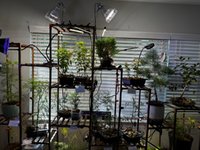 IMG_0240.jpeg354.9 KB · Views: 193
IMG_0240.jpeg354.9 KB · Views: 193 -
 IMG_0238.jpeg420.5 KB · Views: 180
IMG_0238.jpeg420.5 KB · Views: 180 -
 IMG_0226.jpeg506.6 KB · Views: 149
IMG_0226.jpeg506.6 KB · Views: 149 -
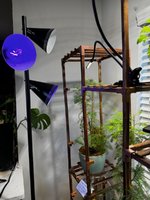 IMG_0221.jpeg273.3 KB · Views: 139
IMG_0221.jpeg273.3 KB · Views: 139 -
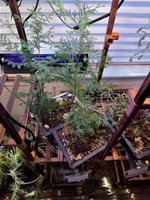 IMG_0219.jpeg406.6 KB · Views: 131
IMG_0219.jpeg406.6 KB · Views: 131 -
 IMG_0218.jpeg425.3 KB · Views: 126
IMG_0218.jpeg425.3 KB · Views: 126 -
 IMG_0217.jpeg468.7 KB · Views: 110
IMG_0217.jpeg468.7 KB · Views: 110 -
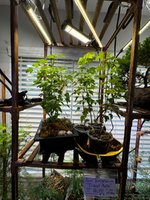 IMG_0216.jpeg475.1 KB · Views: 109
IMG_0216.jpeg475.1 KB · Views: 109 -
 IMG_0213.jpeg496.3 KB · Views: 107
IMG_0213.jpeg496.3 KB · Views: 107 -
 IMG_0209.jpeg331.3 KB · Views: 102
IMG_0209.jpeg331.3 KB · Views: 102 -
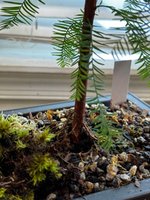 IMG_0202.jpeg364.9 KB · Views: 97
IMG_0202.jpeg364.9 KB · Views: 97 -
 IMG_0215.jpeg457.4 KB · Views: 189
IMG_0215.jpeg457.4 KB · Views: 189


